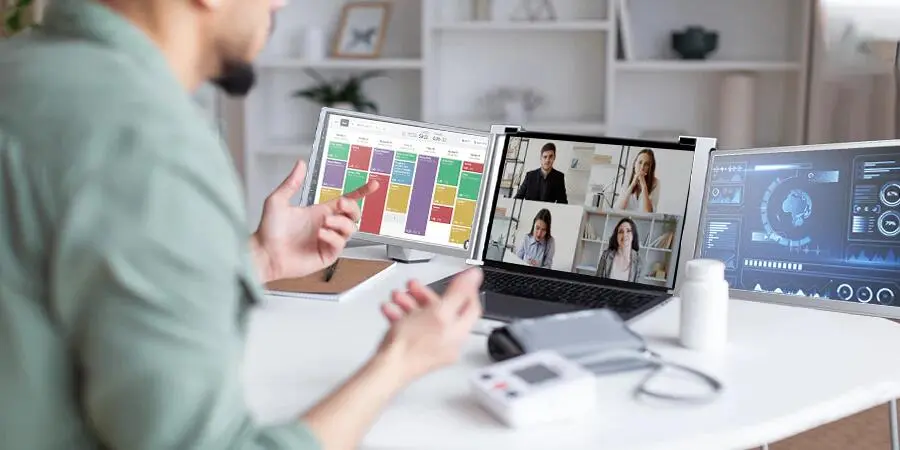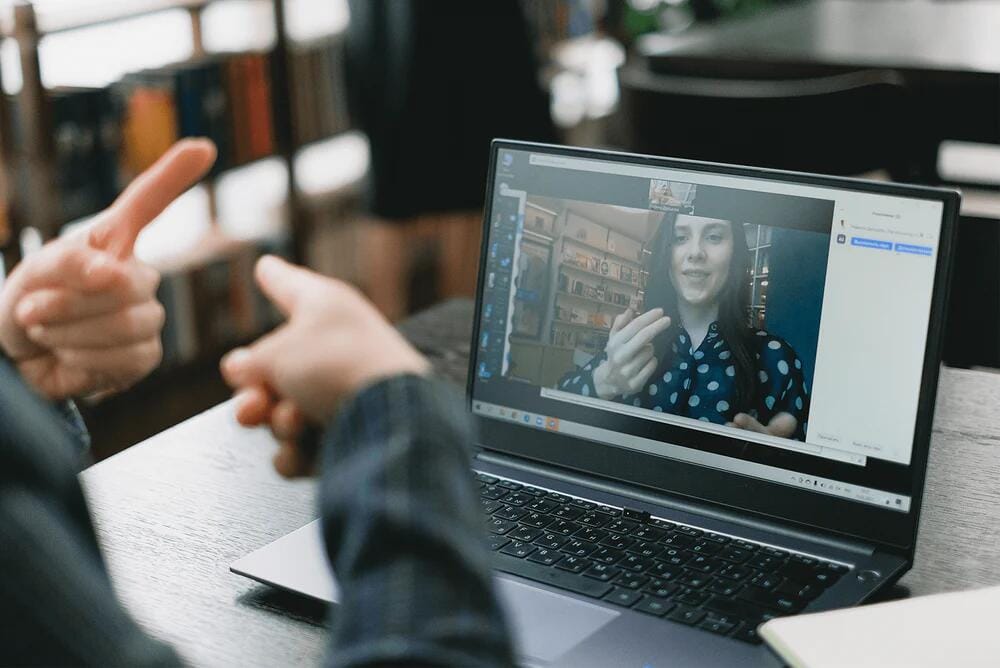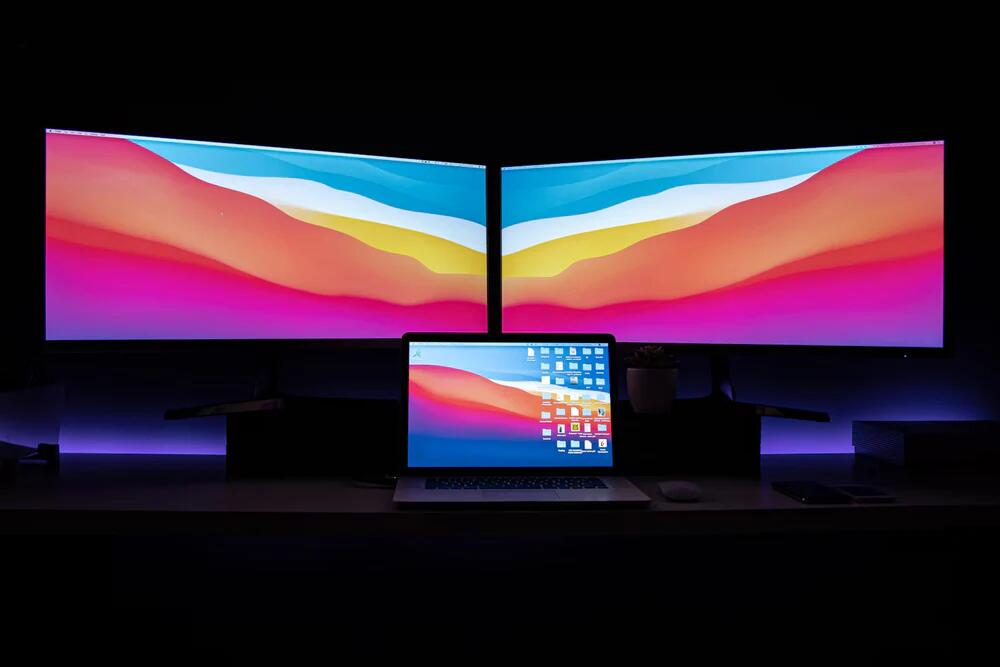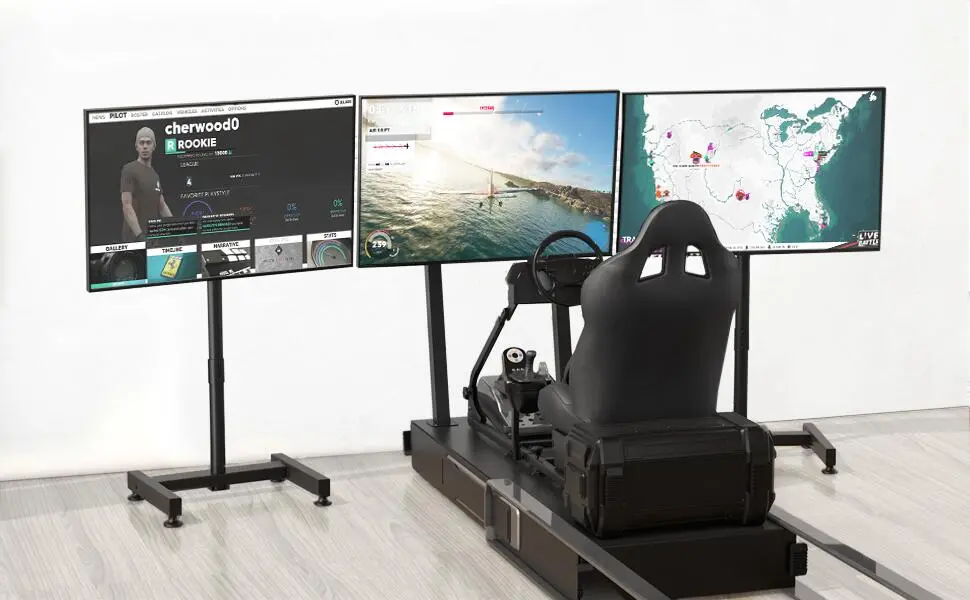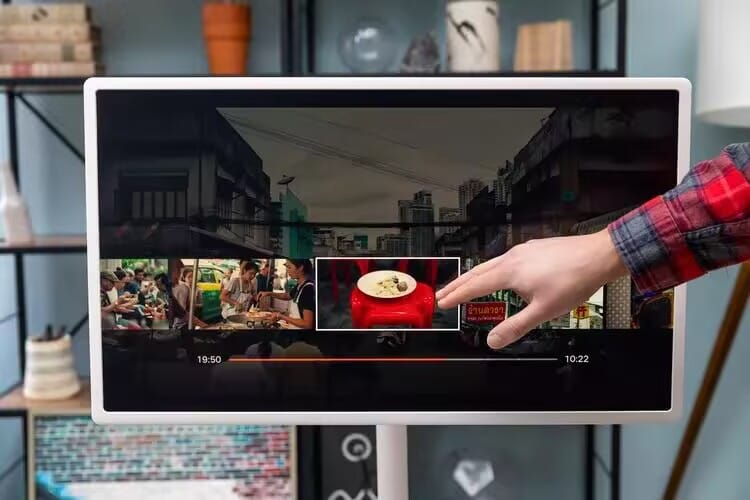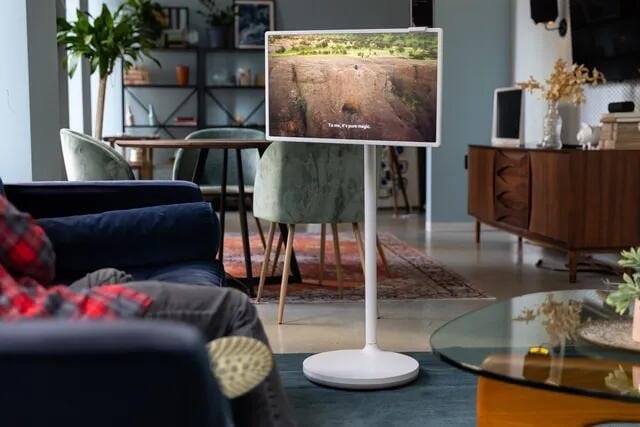Remote work’s the new standard—flexible, sure, but tiny screens take it down. A portable monitor for remote work flips that on its head, introducing space and focus without tying you to a desk. Pair it with a portable monitor with USB-C connectivity for effortless setup, or simplify calls with a portable monitor for video calls. These aren’t luxuries—they’re tools to help you get ahead. Here’s how they modernize your workday and what to pick for the gig.
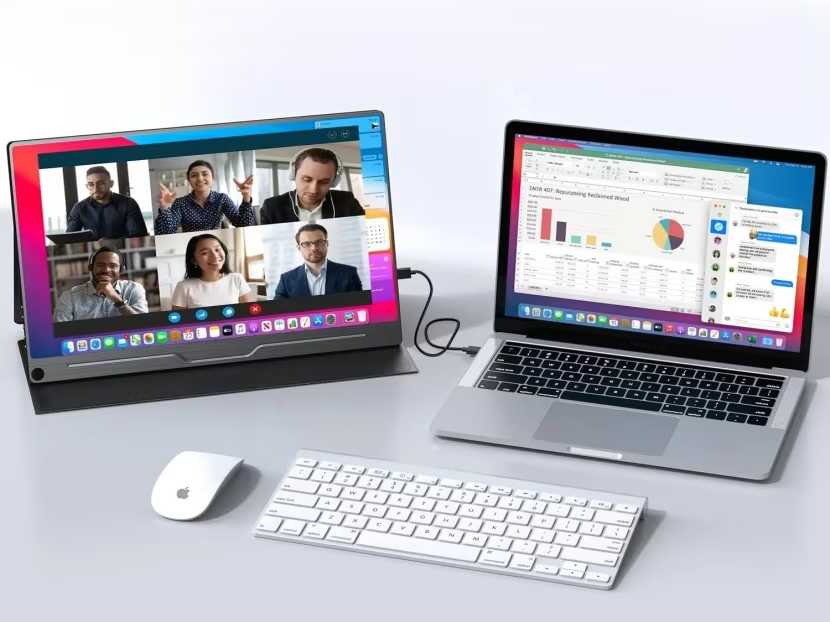
Benefits of Portable Monitors for Remote Employees
Office setup depends on big screens—27 inches, two monitors, the whole works. Home or remote? Laptops rule, but 13- or 15-inch displays pack your apps in—emails stacked on top of one another, spreadsheets shrunk. A remote work monitor bridges that gap neatly. It’s a 15- to 17-inch display—less than two pounds—hooked up to your laptop in no time. More space, no fixed desk required.
The payoff is obvious. Spreadsheets stretch—columns don’t disappear. Docs stack side by side—edits flow smoothly. Video call on one, notes on the other—multitasking is seamless. Weighs less than a hardcover, half-inch thick—takes anywhere. Power’s from your device, normally—USB-C does all the heavy lifting. It’s not about copying the office—it’s about working smart, wherever you find yourself.
Streamlined Operation with USB-C Connectivity
Cables get in the way of your flow—cables entangle, ports are mismatched. A USB-C connected portable monitor eliminates that clutter. A single USB-C cable does video, power, audio—plug and play. Most top out at 1080p—clean for work documents—some can push 4K if your laptop can keep up. Brightness sits at 250-300 nits—good enough for indoor work.
Power is a plus. Sips from your computer—10-15 watts, light load—but battery depletes faster. Passthrough charging’s an option—20W charger charges both devices via the monitor. Works with MacBooks, Windows, even tablets—USB-C’s the new standard. Legacy configurations? Adapters bridge the gap—USB-A or HDMI—but USB-C’s the elegant play. Efficiency’s the goal—less hassle, more focus.
Optimized Performance for Video Conferencing
They label it remote work—Zoom, Teams, meetings all the time. Laptop screens cram it all in—video tiny, chat out of view. A portable monitor for video conferencing fixes that tidily. Use it for calls—15 inches of faces, crisp and big—while your laptop handles notes or slides. No squinting, no overlap—meetings are professional.
Resolution’s 1080p—video-friendly, easy on battery. 60Hz keeps motion smooth—lag’s the issue in calls. Brightness matters—300 nits keeps glare away, makes you visible. Some have speakers—basic, good enough for voice—though headsets reign for sound. USB-C or HDMI connects it—note webcam placement, might need a stand. It’s all about being crisp—clients notice.
Basic Features for Successful Remote Work
Size takes off—15.6 inches strikes a balance between usability and mobility. Smaller 13-inch—less than a pound—is appropriate for light travel; 17-inch provides room, more difficult to carry. A mobile monitor for work from home requires weight less than two pounds—half-inch thick makes it slender. Resolution—1080p’s default, 4K’s for heavy graphics—check your laptop’s output.
A portable monitor connected by a USB-C port depends on that socket—DisplayPort Alt Mode’s little secret, most new tech does. Low power draw’s 15 watts max—but 4K requires it—convenient charger. Brightness of color—250 nits at minimum, 300+ for bright rooms. IPS screens deliver—wide viewing angles, correct colors for documents or video chats. Speakers? Sweet subtle touch—thin bass, but voices ring out.
For a portable monitor for video-conferencing, screen size is the first priority—15 inches over 13 for facial recognition—and brightness—300 nits fights light. USB-C’s best—one cable, no worries—though HDMI will suffice with a power cable.
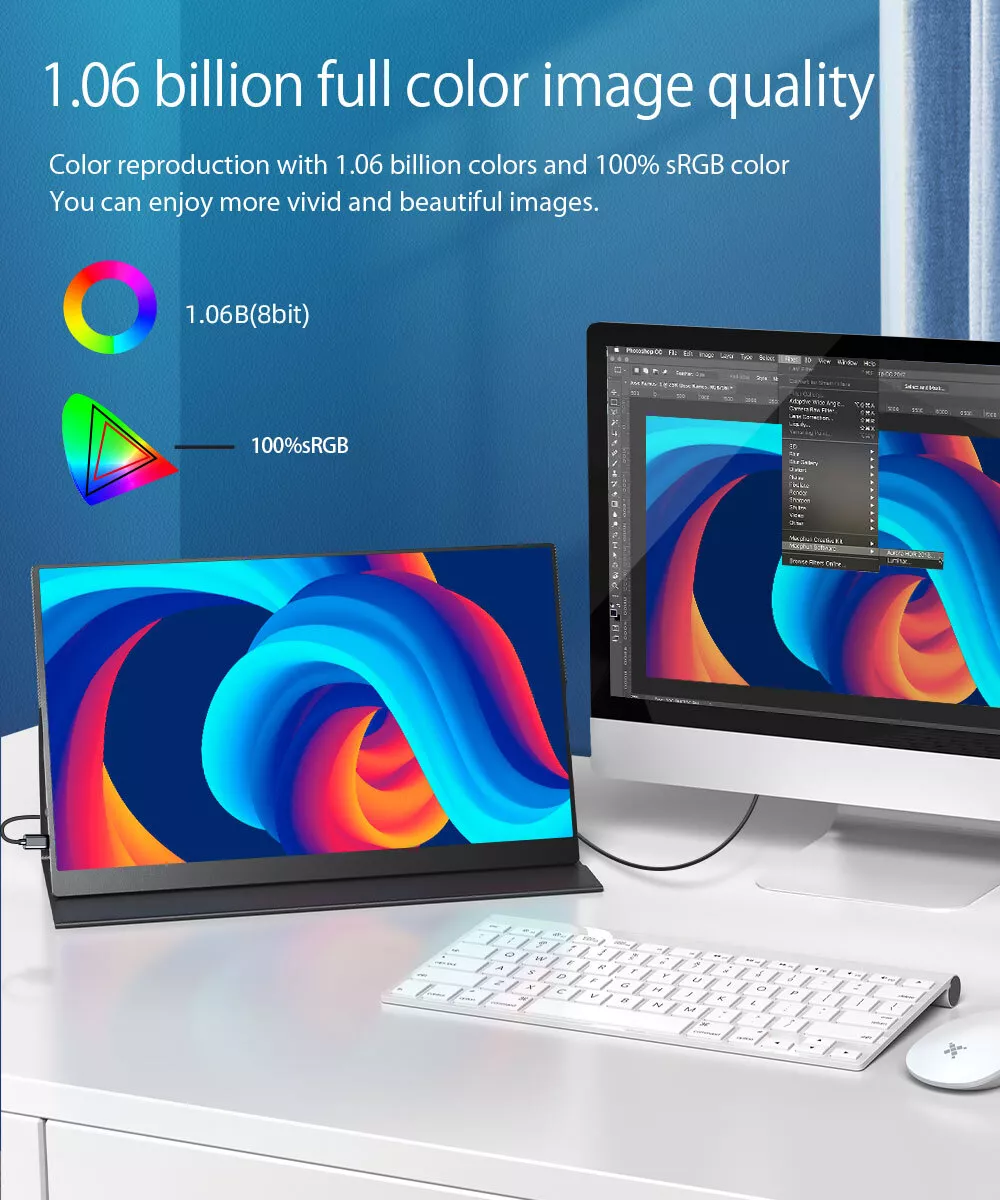
Applications in Remote Work Environments
This glows across work. Remote work monitor fits the daily grind—email on one, project on the other. Coders split code and docs—less tab dance. Managers keep an eye on KPIs—dashboards always open, no squeeze. Home office, coffee shop—works in any place, no bulk.
The USB-C portable display simplifies. MacBook single cable—to presentation prep in a jiffy. Windows laptop—columns of spreadsheets line up adapter-free most often. Tablets become available—IPad or Surface, note-taking second screen. Workaway jobs—client’s address, hotel desk—pop out, get flowin’. Minimal—it keeps kit snug.
Calls receive the travel monitor video conferencing treatment. Full-screen Zoom—participants pop, chat’s clear. Teams meeting—slides on laptop, faces on monitor—control remains yours. Webinars—view and type, no divided attention. Speaker output’s enough for small rooms—headsets seal the deal. Professional edge, anywhere—looks count.
Wider Utility Beyond Work
It transcends work. Films on a trip—bigger than a phone, streams in sanitation. Gaming illumination—Switch or computer, 60Hz fine. Homework of the children—second screen for research, fewer fight. Power is low-key—10-15 watts—draws power from a bank if needed. Work is the core—addons along.
Setup and Maintenance Considerations
Setup’s easy. USB-C—insert, Windows “Display Settings” or macOS “System Preferences” sorts it out. Extend desktop—work’s more efficient split. HDMI—insert a USB power cable, same situation. Test it—use Teams, check lag—cable’s cheap? Change to USB-C 3.1. Stand’s built-in—foldaway cover, adjust it.
Care is no burden. Sleeve it—scratches bug quickly. Cables age—spare’s inexpensive, USB-C’s the norm. Clean it—microfiber, smudges disappear. A portable monitor for remote work depletes light—20W charger or bank keeps it going. Pack compact—slides alongside a laptop, no issue. Stays tough—handle it correctly.
Last Takeaway: Upgrade Your Remote Routine
A work-from-anywhere travel monitor shatters screen limitations—productivity takes off, no tether. A USB-C connected portable display streamlines the connection, and a portable video conferencing display sharpens your calls. It’s practical—work smarter, anywhere. We at ONext design these for that—light, connected, ready to roll for pros. Grab one, plug it in, and power your day like a pro.
